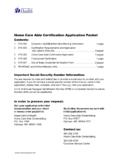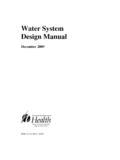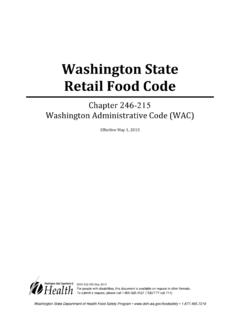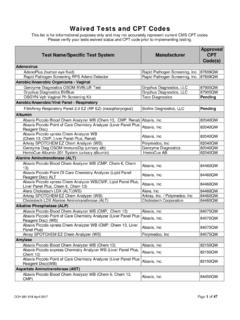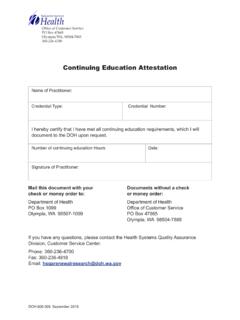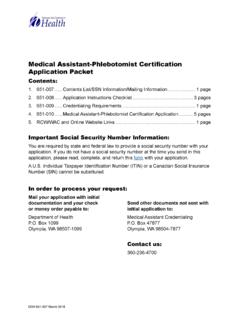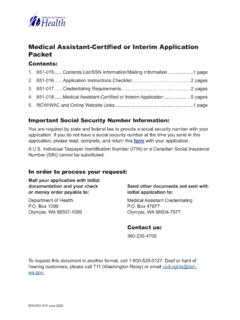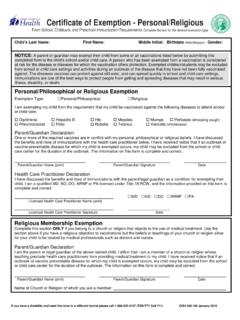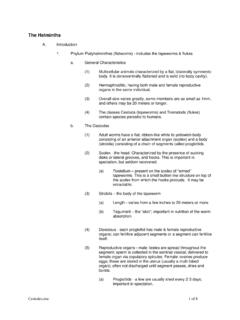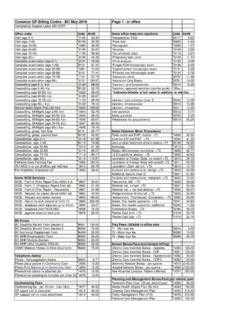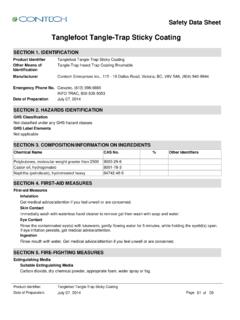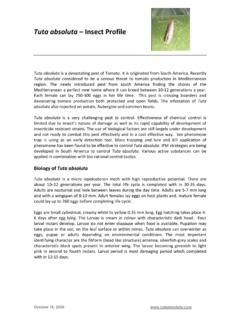Transcription of Calibration and Calibration Verification Requirements
1 Calibration and Calibration Verification October 2006 Since March 2005, the Washington Medical Test Site (MTS) regulations require Calibration Verification for both moderate and high complexity test systems. The following information reviews Calibration and Calibration Verification in a question and answer format: Calibration is the process of testing and adjusting an instrument, kit, or test system readout to establish a correlation between the instrument s measurement of the substance being tested and the actual concentration of the substance. Q: Is there a new requirement for Calibration ?
2 A: No, the MTS Requirements for Calibration have not changed. The laboratory is responsible for performing Calibration as directed by the manufacturer s test system instructions, and when Calibration Verification (see below) of the test system does not produce acceptable results. Q: Is Calibration required for every procedure my laboratory performs? A: No, Calibration is not required for the following: Manual procedures such as microbiology cultures and tilt-tube prothrombin time test systems. Microscopic procedures such as KOH preparations, pinworm preparations, urine sediment analysis, all manual cell differential procedures, and manual cytology screening procedures.
3 Procedures involving an instrument in which Calibration is not practical such as timed coagulation procedures (prothrombin time, APTT, ACT). Q: How do I perform Calibration ? A: The test system s instructions should describe the process for performing Calibration , as well as when and how often it is to be performed. Q: What materials should I use to perform Calibration ? A: The test system s instructions should specify the number, type, and concentration of the Calibration material to use. Calibration material is a solution or lyophilized preparation that contains a known concentration of the analyte of interest.
4 NOTE: Be sure to keep written documentation each time you perform a Calibration . 2 Calibration Verification means the testing of materials of known concentration in the same manner as patient samples to assure the test system is accurately measuring values throughout the reportable range. Q: Is Calibration Verification required for moderate complexity tests? A: Yes. Calibration Verification is required for non-waived testing (both moderate and high complexity). Prior to March 2005, the process for Calibration Verification was defined only for high complexity test systems.
5 Q: Are there exceptions to the Calibration Verification Requirements ? A: Yes. The following are exceptions: Activities routinely used to satisfy the daily QC Requirements do not satisfy the Calibration Verification Requirements . However, there is an exception for automated cell counters. For automated cell counters, the Calibration Verification Requirements are considered met if the laboratory follows the manufacturer s instructions for instrument operation, and tests two levels of control material each day of testing, provided the control results meet the laboratory s criteria for acceptability.
6 NOTE: At the time of installation of your hematology analyzer, it is recommended that linearity standards, that challenge the stated reportable range of the instrument, be tested. This is especially important in oncology practices where patient samples routinely challenge the lower and upper limits of the instrument. If the test system s Calibration procedure includes three or more levels of Calibration material, and includes a low, mid, and high value, and is performed at least once every six months, then the requirement for Calibration Verification is also met.
7 If the laboratory routinely tests three levels of control materials (lowest level available, mid-level, and highest level available) more than once each day of testing, and the control results meet the laboratory s criteria for acceptability, and the control materials are traceable to National Institute Standards and Technology (NIST) reference materials, the Calibration Verification Requirements are met. Q: When must I perform Calibration Verification ? A: Once every 6 months (or more frequently if specified in the test system s instructions) and whenever any of the following occur: All of the reagents used for a test procedure are changed to new lot numbers, unless the laboratory can demonstrate that changing reagent lot numbers does not affect the range used to report patient test results and control values are not adversely affected by reagent lot number changes.
8 There is a major preventive maintenance or replacement of critical parts that may influence the test s performance. This includes when the laboratory sends a test 3system to the manufacturer for repairs. The laboratory must verify the Calibration of a repaired test system before resuming patient testing and reporting results. Control materials reflect an unusual trend or shift, or are outside of the laboratory s acceptable limits, and other means of assessing and correcting unacceptable control values fail to identify and correct the problem.
9 The laboratory has determined that the test system s reportable range for patient test results should be checked more frequently. NOTE: For factory-calibrated test systems, the user is still responsible for verifying Calibration . Q: What materials should I use to perform Calibration Verification ? A: A variety of materials with known concentrations may be used to verify Calibration . Examples include: proficiency testing samples with known values; patient specimens with known values; or commercially available standards, calibrators, or control materials with known values ( , manufacturer s assayed values).
10 For these materials, the laboratory must define acceptable limits for the difference between the measured values obtained, versus the actual concentration of the materials. Since the purpose of Calibration Verification is to check whether the test system is providing accurate results throughout the reportable range, three levels must be tested (one at the high end of the reportable range, one at the low end of the reportable range, and one near the midpoint of the reportable range). NOTE: Be sure to keep written documentation each time you perform Calibration Verification .
